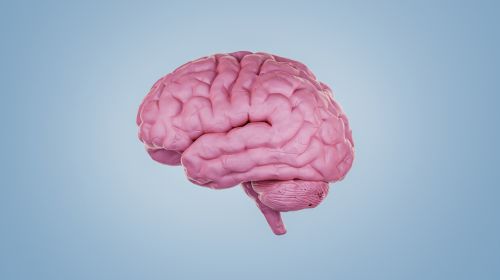A glioblastoma is a malignant brain tumor known for its rapid growth. Despite intensive treatment with surgery, radiotherapy and chemotherapy, the prognosis is usually poor. How does a glioblastoma manifest itself and what are the chances of recovery?
- © Getty Images/Luis Alvarez
Quick Overview: Glioblastoma
Definition: A glioblastoma is a fast-growing, malignant brain tumor that can be fatal within a few months if left untreated.
Cause: The causes of glioblastomas are not clearly understood. Anyone who suffers from certain hereditary diseases or has already undergone radiotherapy has an increased risk of developing glioblastoma.
Symptoms: Depending on where in the brain the glioblastoma is located, motor skills, sensory perception, memory or behavior can be impaired. Headaches or seizures occurring for the first time are typical.
Diagnosis: The glioblastoma is detected using imaging methods, and the type of tumor is determined using a tissue sample.
Treatment: A glioblastoma always requires surgery. This is followed by radiation and chemotherapy, sometimes alternating electrical fields are used for maintenance therapy.
Article content at a glance:
What is glioblastoma?
A glioblastoma is a tumor in the brain that develops from the supporting cells (glial cells) that surround nerve cells. This makes it one of the gliomas. A glioblastoma is always malignant and is classified as grade IV by the World Health Organization (WHO) – this is the highest grade a tumor can receive. A glioblastoma cannot be cured, the average life expectancy after diagnosis is 15 months with therapy.
Specialists distinguish primary and secondary glioblastomas:
primary glioblastomas make up the majority, arise directly from the healthy glial cells, are very aggressive and grow rapidly.
secondary glioblastomas arise from tumors of lower severity. They are more likely to occur in younger people and have a better prognosis than the primary form.
Rarely does this type of tumor metastasize outside of the cells of the central nervous system.
frequency
Glioblastomas account for more than half of gliomas, glioblastoma is the most common malignant brain tumor. About 3 out of 100,000 people develop glioblastoma each year, and men are affected more often than women. Glioblastoma can occur at any age, but it most commonly affects people between the ages of 50 and 75.
Causes and risk factors
The causes of the development of a glioblastoma have not been clearly clarified. However, there seems to be a hereditary component: people with certain hereditary diseases (such as neurofibromatosis, tuberous sclerosis or Li-Fraumeni syndrome) have an increased risk of developing glioblastoma. Those who have already undergone radiotherapy for another type of cancer also have an above-average tendency to develop glioblastoma.
Studies show that there is no connection between tobacco or alcohol consumption, the use of mobile phones or proximity to high-voltage power lines and the development of brain tumours.
Typical symptoms of glioblastoma
The rapidly proliferating tumor tissue displaces or impairs healthy brain structures. Depending on where in the brain the glioblastoma is located, different types of symptoms occur:
Signs of intracranial pressure such as headaches, balance disorders or vomiting
neurological deficits such as paralysis, visual, hearing or speech disorders
seizures that occur for the first time
Personality changes such as confusion or irritability
Diagnosis: This is how a glioblastoma is diagnosed
To diagnose a glioblastoma, a detailed discussion (anamnesis) is first conducted in the doctor’s office. Doctors ask about the specific symptoms, medications taken and any previous illnesses. This is followed by a neurological examination of the patient, in which, for example, reflexes, motor skills, vision, hearing and language skills, memory and balance are tested.
If there is a suspicion of a brain tumor, an imaging procedure usually follows:
Magnetic resonance imaging (MRI) of the skull is used to determine the size and location of the glioblastoma. A contrast medium can be administered for better visualization.
Alternatively, computed tomography (CT) can be performed.
In some cases, a positron emission tomography (PET) scan is also used for a more detailed diagnosis.
For the final diagnosis, the next step is to remove tissue from the brain. This so-called biopsy is carried out either via a small drill hole in the skull bone or in the course of an operation in which the tumor is removed directly. The tissue obtained is examined in the laboratory to determine the type of tumor and its aggressiveness. This is important for therapy planning.
How is glioblastoma treated?
Since a glioblastoma grows extremely quickly, an operation should be carried out as quickly as possible. During resection, as much tumor tissue as possible is removed without damaging the healthy brain tissue. However, since the tumor cells in a glioblastoma always invade the surrounding tissue (infiltrating growth), the glioblastoma cannot be completely surgically removed and further treatments are required. Nevertheless, the operation can bring about a significant reduction in symptoms, at least temporarily.
The standard therapy is a combination of surgery with radiotherapy and chemotherapy. In radiation therapy, a high dose of ionizing radiation is radiated into the tumor area in several sessions. This inhibits the further growth of the tumor cells and ideally allows them to die off. At the same time, the patients receive medication that kills the cancer cells. Side effects of these cytostatics such as temozolomide can in turn be alleviated with medication.
Tumor therapy fields are intended to inhibit cell growth
Following the radiation and parallel to the chemotherapy, some centers also offer the so-called tumor therapy fields (Tumor Treating Fields, TTF or TTFields). With this treatment method, special adhesive pads are placed on the scalp, which are used to administer alternating electrical fields that disrupt the ability of cancer cells to divide. The alternating fields are generated by a battery-operated device that those affected can carry in a backpack. The device has to be worn daily – the aim is to maintain the condition achieved after the operation for as long as possible.
Course and prognosis in glioblastoma
The prognosis and thus survival time with a glioblastoma depends heavily on its size and the age and condition of those affected. Without treatment, most people with glioblastoma die within a few months. With therapy, the average life expectancy after diagnosis is 15 months. Five years after the diagnosis, only ten percent of those affected are still alive.
New data from a study on long-term survival show that patients without a recurrence (relapse) have a survival advantage: they achieved longer survival times in the first years after therapy. However, the background needs to be investigated in further studies.


